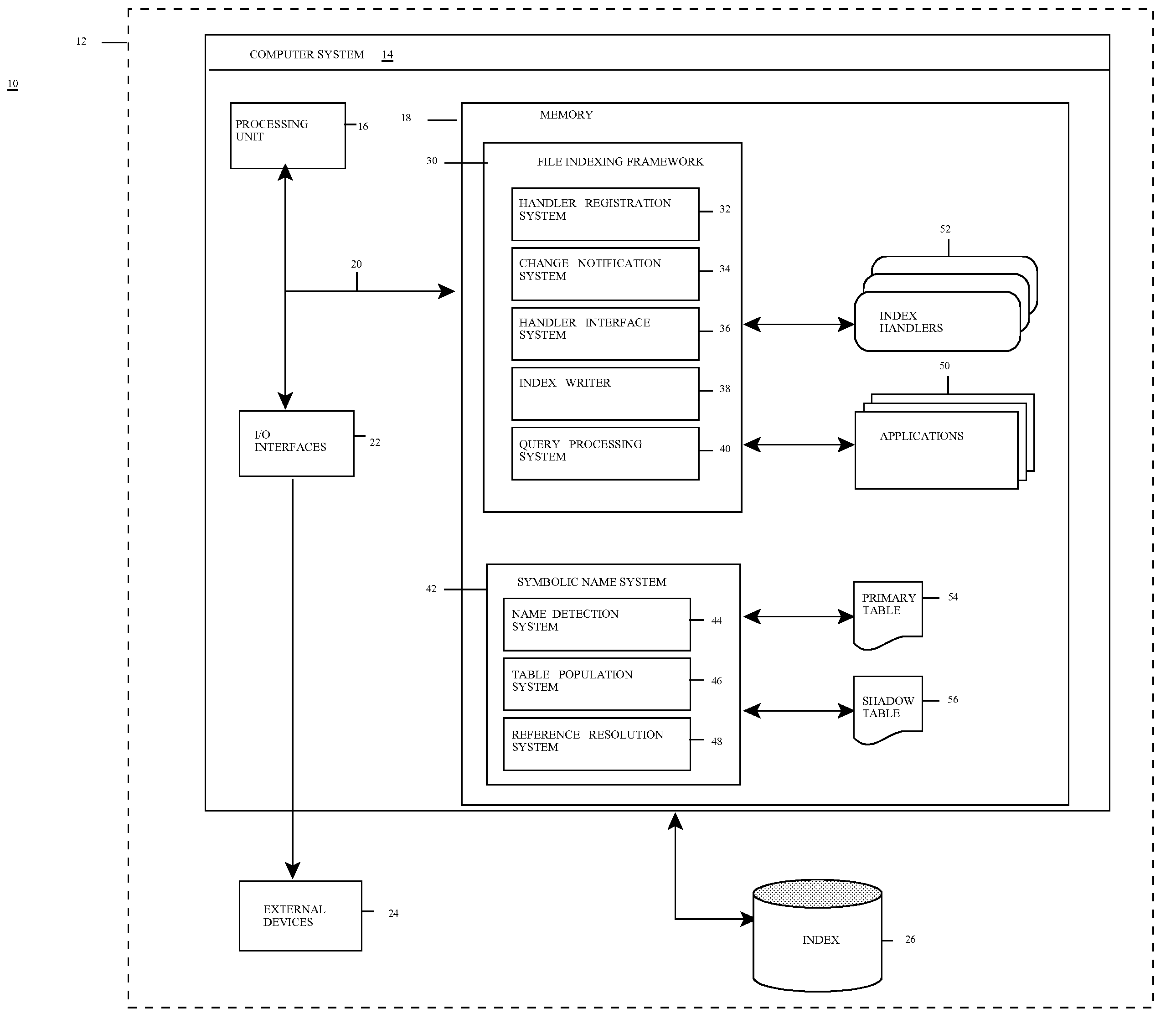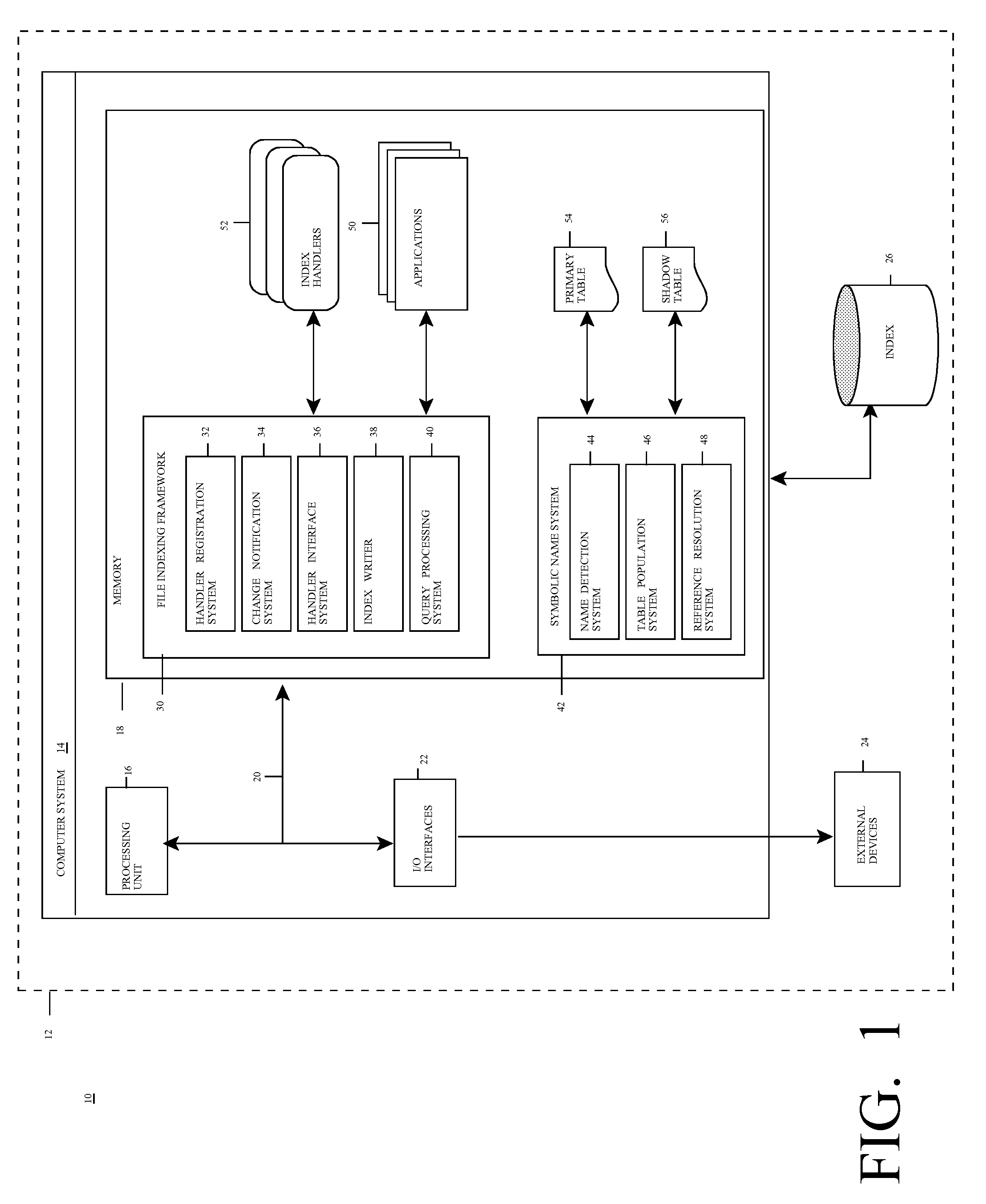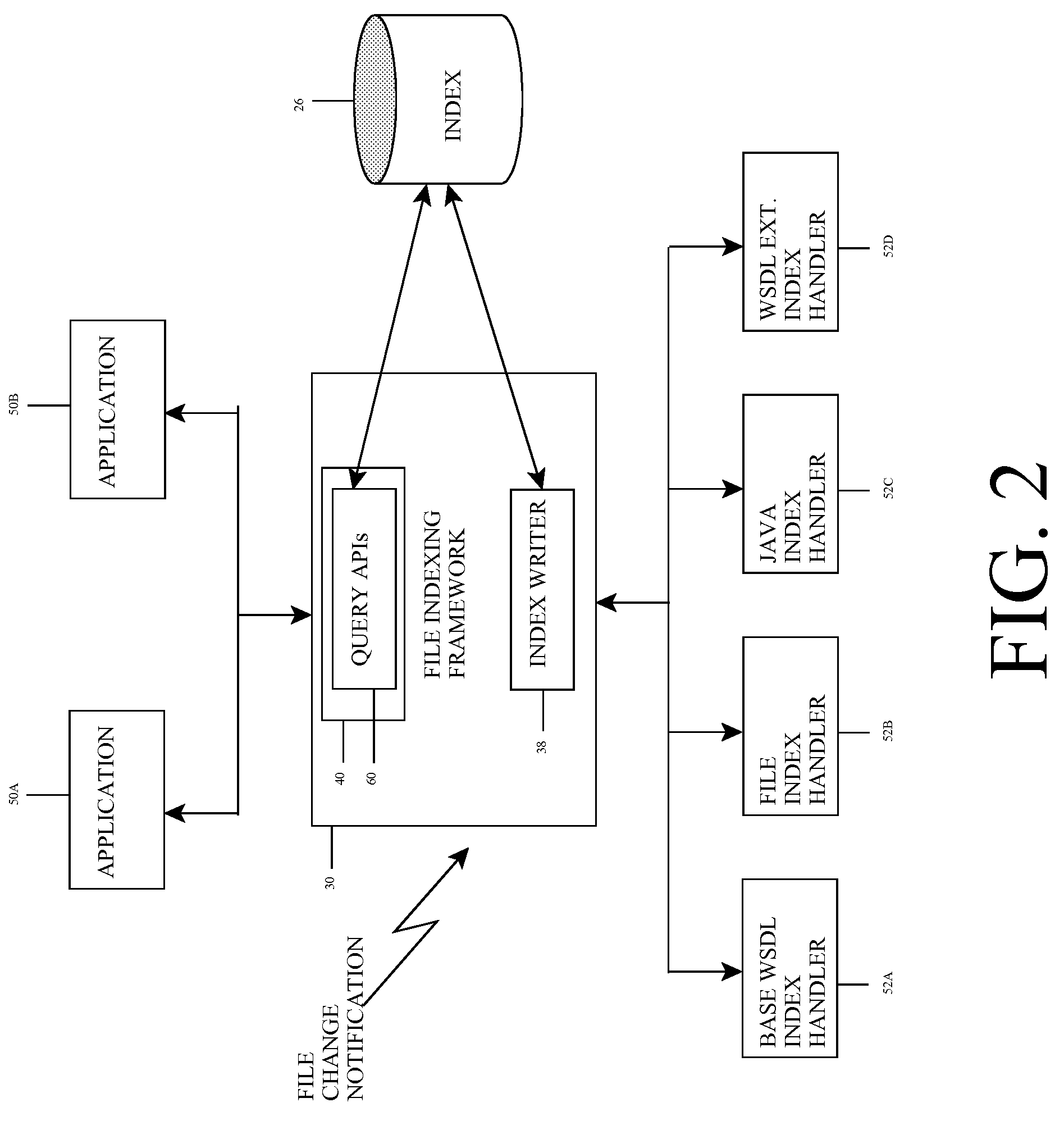File indexing framework and symbolic name maintenance framework
a file indexing and symbolic name technology, applied in the field of file management, can solve the problems of inability to parse the contents of a file, time-consuming search for data in a file, and inability to use a technique for files with well-known formats
- Summary
- Abstract
- Description
- Claims
- Application Information
AI Technical Summary
Benefits of technology
Problems solved by technology
Method used
Image
Examples
Embodiment Construction
[0037]Referring now to FIG. 1, a file management system 10 according to the present invention is shown. As depicted, system 10 includes computer system 14 deployed within a computer infrastructure / environment 12. This is intended to demonstrate, among other things, that some or all of the teachings of the present invention could be implemented within a network environment (e.g., the Internet, a wide area network (WAN), a local area network (LAN), a virtual private network (VPN), etc.), or on a stand-alone computer system. In the case of the former, communication throughout the network can occur via any combination of various types of communications links. For example, the communication links can comprise addressable connections that may utilize any combination of wired and / or wireless transmission methods. Where communications occur via the Internet, connectivity could be provided by conventional TCP / IP sockets-based protocol, and an Internet service provider could be used to establ...
PUM
 Login to View More
Login to View More Abstract
Description
Claims
Application Information
 Login to View More
Login to View More - R&D
- Intellectual Property
- Life Sciences
- Materials
- Tech Scout
- Unparalleled Data Quality
- Higher Quality Content
- 60% Fewer Hallucinations
Browse by: Latest US Patents, China's latest patents, Technical Efficacy Thesaurus, Application Domain, Technology Topic, Popular Technical Reports.
© 2025 PatSnap. All rights reserved.Legal|Privacy policy|Modern Slavery Act Transparency Statement|Sitemap|About US| Contact US: help@patsnap.com



